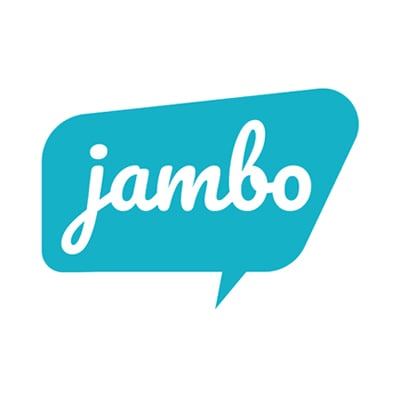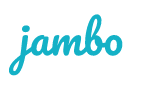
During your stakeholder engagement project, the data you collect will hold important insights and answers into your stakeholders, potential issues, new opportunities, and more. So, how you manage your information will significantly impact how successful you and your teams will be with your stakeholder engagement project.
One of the most common stakeholder management tools teams use to begin their journey is spreadsheets. As most people already have access to spreadsheets, this seems like a cost-effective and easy solution; however, there are many drawbacks to using spreadsheets for stakeholder management, some of which you've probably already encountered.
In this blog, we will cover three reasons why it's time to graduate from spreadsheets and start using an SRM to improve stakeholder management for better project outcomes.
3 reasons to switch from spreadsheets to stakeholder relationship management software
You might be asking, "Why not just stick with spreadsheets?" "What can stakeholder software do that spreadsheets can't?" While spreadsheets have their place, switching to stakeholder relationship management software unlocks powerful tools and efficiencies that traditional methods simply can't match. Here are some reasons to move from spreadsheets, and no, it won't be painful to switch:
1. Spreadsheets were made for accounting, not stakeholder engagement
If you're tracking your stakeholder information in spreadsheets, you undoubtedly know that it's difficult to quickly understand your stakeholders and your history or relationships with them at a glance. Stakeholder relationships are crucial to the success of your engagement project, and to build those positive relationships, you'll need to use the data you collect to learn about your stakeholders.
However, when you don't have access to all your data or can't easily make sense of it, you won't be able to use it to make data-driven decisions on how best to prepare for upcoming stakeholder meetings (or important check-ins) or necessary plan adjustments.
Additionally, without help from your data, you risk missing important updates about your stakeholders or vital insights into what they care about most and want from your engagements, which negatively impacts those crucial relationships.
How spreadsheets can negatively impact your stakeholder relationships:
- Your stakeholder information is often logged in multiple spreadsheets (e.g., you'll have one for contact information, one for issues, one for commitments, etc.). This can leave you without easy access to all the information you need to communicate effectively with your stakeholders.
- Spreadsheets can make it challenging to understand when information has been updated, so you don't know if you're looking at the most recent data. When communicating with stakeholders, you might be referencing outdated information or missing crucial updates.
- Inputting errors are familiar with spreadsheets, so you may have spelling errors, incorrect data, or gaps in data without even realizing it (we don't have to tell you that misspelling your stakeholders' names or referencing incorrect information is bad for building relationships!).
- Your team may be working on updating their own version or copy of the spreadsheets and saving them to their personal desktops that you can't easily access (you may not even know these copies exist).
Without clear access to everything your stakeholders have shared with you and your team, it's challenging to learn about the. Building those vital stakeholder relationships can be tricky and negatively impact your project.
Check out our blog for three reasons stakeholder relationships are vital for your organization's success→
How an SRM helps you learn about your stakeholders and build trust for stronger relationships
Trust is vital to building positive stakeholder relationships. For your stakeholders to trust you, they need to believe:
- You'll be respectful
- You're being honest and transparent
- You're listening and taking them seriously
- You'll keep your promises
How an SRM can help you to offer respectful engagement
With an SRM, all your data is organized and accessible. If you're meeting with stakeholders, you can quickly jump into their stakeholder profile to see all the data they've shared with you or your teams in one place. With a centralized SRM like Jambo, you know everything is updated and easy to understand, so you'll be confident that you're engaging with the most recent information.
For example, if a stakeholder has had a name or job change, then change. You can quickly see this logged information in their profile before you, so that you can engage with relevant and respectful information.
Additionally, in Jambo, all your data connects together, so you can quickly understand the big picture of your engagement project and the full story of your engagement with each of your stakeholders.
For example, you can click on a stakeholder profile to see all the logged engagements with that person, any issues they've raised, any commitments you or your team have made to them, and more. This connectivity ensures you're updated and can engage respectfully and accurately.
How an SRM can help you to be honest and transparent with your engagements
With an SRM, you can bring reports to your meetings to share relevant information with that stakeholder, whether you want to share recent changes or the information you've logged about that stakeholder to ensure it accurately reflects what they've told you and your teams.
These accurate and reliable reports will significantly improve your ability to share honest updates transparently and trustworthily.
How an SRM can help you to show your stakeholders you're listening
It's essential to follow up with stakeholders with any relevant updates and, in some situations, to let them know why there haven't been any updates.
With an SRM like Jambo, which has a tasks feature, you can assign tasks for yourself or your teams to set times to check in with certain stakeholders so you never forget to close the loop (you can even see when these tasks have been completed!).
This is just one effective way to show your stakeholders that you listen to them and take their perspectives seriously with the help of an SRM.
How to use an SRM to show your stakeholders that you keep your promises
When it comes to promises you make to your stakeholders (or commitments, as we call them), you must take these seriously.
SRMs with a commitments module will help you easily organize and monitor all your stakeholder commitments, so you always know what needs to be done. You will help ensure no promise is ever forgotten.
Want to learn how an SRM can help you better understand your stakeholders? Check out this blog→
2. It can feel impossible to report on your stakeholder data with spreadsheets
Reports are vital to the stakeholder engagement process. You'll need them to share with managers, your teams, stakeholders, regulators, and anyone else who needs updates on your project's progress.
However, building these accurate reports can feel impossible when you don't have clean, organized data accessible in one location, which is familiar with spreadsheets.
3 ways spreadsheets make summarizing your data into understandable and complete reports challenging
- When data is input into multiple spreadsheets, you may not have access to all these spreadsheets or even know they exist. So, summarizing your data into clean, organized, and comprehensive reports can be incredibly time-consuming, if not impossible.
- The input errors mentioned above can result in incorrect information being added to the spreadsheets. So, even if you do find all your data, it might not be accurate, which means your reports will be incorrect, and you'll have to spend extra time double-checking everything or cleaning the data before you build your reports.
- When the spreadsheet input process is confusing and frustrating, team members will avoid it altogether. Unfortunately, that means your vital data may be stored on USBs, external drives, or even scribbled on pieces of paper. This leaves you unable to access all the data you need and will require even more time and effort to track down the missing data to try to build your reports.
How an SRM can help you create effective and accurate reports fast
SRMs like Jambo have been designed to make your stakeholder engagement reporting fast and easy.
With Jambo, we know teams are regularly asked to report on their stakeholder engagement information, so our team has ensured that reports are easy to create and use.
Whether you want to download project progress reports to share with decision-makers, produce detailed reports to illustrate your history of engagement with one or all your stakeholders, or drill down into everything related to a specific issue, you can build these complete reports in minutes.
Read our blog to learn how SRM can help your engagement projects→
3. Spreadsheets make collaborating with your team overly difficult
Your stakeholder engagement project will likely include a team of (at least) a few people, and you'll need to collaborate with those people to share updates, insights, and make strategic decisions for your stakeholder engagement plans.
As these projects are often time-sensitive, teams must work together quickly and efficiently, which can be hard with spreadsheets.
3 ways spreadsheets make team collaboration challenging
- Without a clear audit trail in spreadsheets, it's hard to understand who on your team has added information or made changes. You don't know who to ask if you have questions or how to find out if information is updated correctly without wasting extra time investigating.
- If people have their own copies of spreadsheets saved on their desktops or information stored in different places, not everyone on the team will have access, which means team members will be working with incomplete data and will not be able to contribute to the project equally or effectively.
- When information is disorganized in spreadsheets, it can be not easy to collaborate on your stakeholder engagement efforts with your team. For example, if you're meeting with a stakeholder who has previously engaged with your team members but can't find these previous engagements in your spreadsheets, you won't be able to pick up where your team has left off. If you don't know what's already been said to that stakeholder and you say something different or don't follow up with something promised to them, this can change their view of your team and negatively affect your project.
How an SRM improves your teamwork
Many SRMs, like Jambo, have been designed for team collaboration. They help you work as a team in real time to add easy updates, check on progress, and make strategic decisions to improve your stakeholder relationships and create positive project outcomes.
With SRMs with an audit trail, you can understand who made changes and when. This way, you're always informed about your team's activity within the data and know who to ask if you have questions.
When multiple team members communicate with the same stakeholders, an SRM will allow you to understand what conversations your teams are having so you can pick up exactly where they left off.
Additionally, with the task management feature mentioned above, you can assign tasks for your teams in an SRM like Jambo, allowing you to collaborate while keeping everyone accountable.
Please read our blog here to learn how an SRM can help you improve your teamwork→
What is Stakeholder Relationship Management (SRM) software?
For those new to the software, Stakeholder Relationship Management (SRM) software manages all your stakeholder relationships and communications with those stakeholders. It ensures your stakeholder information is organized, accessible, searchable, and easy to understand, so you can focus on building trust and strong, long-term stakeholder relationships, which are key to the success of your projects.
Is now the time to graduate from spreadsheets?
If the SRM benefits we mentioned above resonated with you, it's likely time to graduate from spreadsheets; however, we know you're probably not the only person who will be part of this critical decision to switch to Stakeholder Relationship Management (SRM) software.
Not sure how to get started? Download our free eBook, 'The Step-By-Step Guide to Say Goodbye to Spreadsheets' by clicking the image below→








